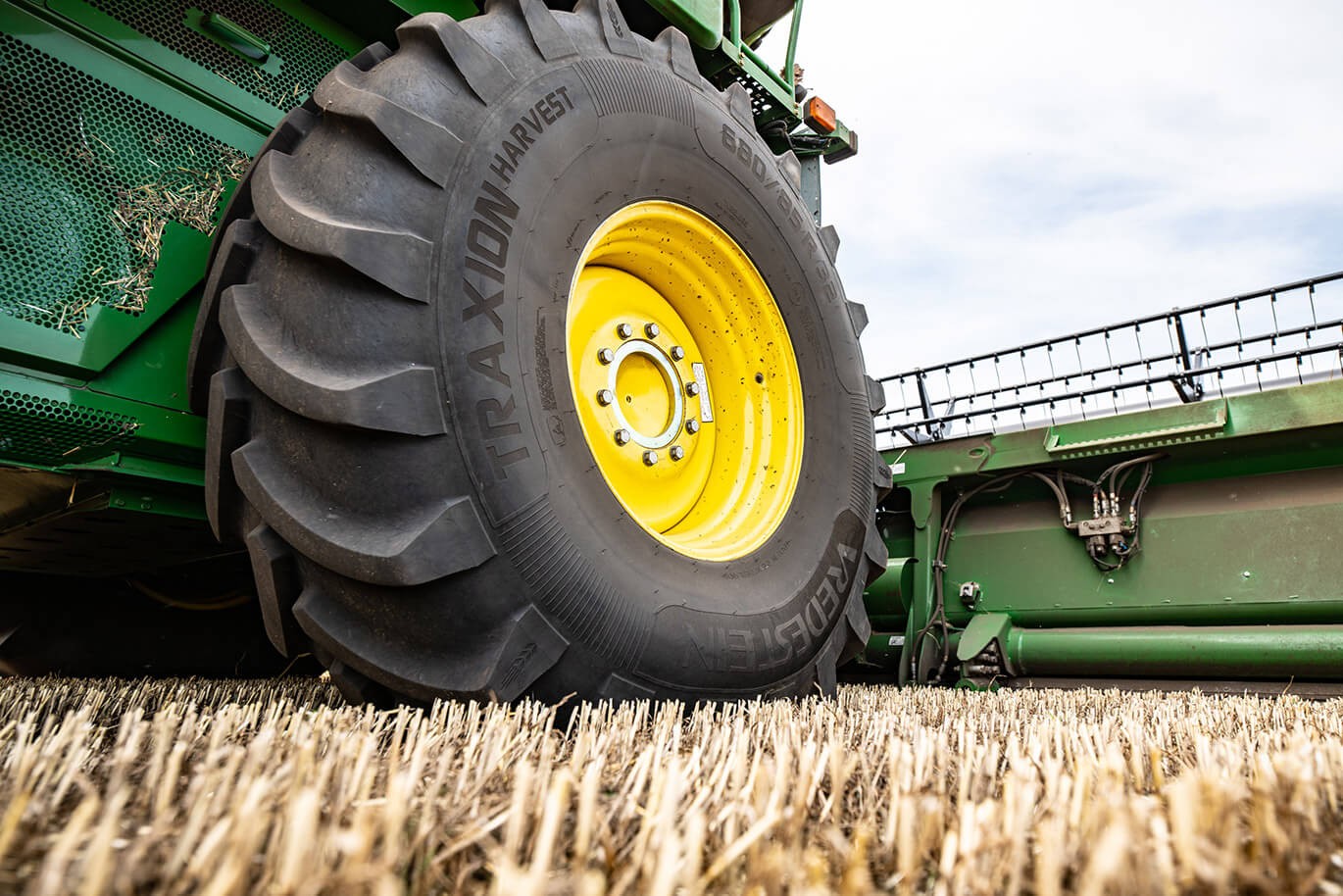Find you closest Vredestein Dealer
Use my current location
Search Dealer by location or ZIP
Close
When both harvest season and planting winter wheat (among other produce) are fully underway, the last thing a farmer would want to worry about is an equipment failure or malfunction. Lengthy and costly delays may spell disaster if the tires on a combine harvester or tractor equipment are not fit for purpose.
Thankfully, there are a few things one can do to help avoid this occurring. The first is regularly to check tires for any kind of damage: cuts, tears, or any bulges. It is good practice to develop a habit of checking the sidewalls and bead area close to the rim: harvesting equipment, when operating on slopes, can apply a massive strain on the bead/sidewall area of the tire, and checking it regularly will help detect any possible damage as early as possible.

Check both front and rear tires regularly. It’s quite easy to assume that if the front tires are fine, then the rear tires will be in good condition too. Rear tires must be allocated the same amount of time for checks as the front tires. If a combine has been inactive for a while, ensure that tires are stored without the vehicle’s weight on them, and shielded from direct sunlight. Flat spots can lead to casing integrity failure, causing problems during service. Note: For insurance purposes make sure the vehicle can be moved quickly in case of building fires.
If unsure, consult us for guidelines on tire and wheel storage.

Accelerate slowly and brake progressively to maximize tire life. It sounds pretty obvious, however, it can help extend the tires’ lifetime, ensuring they stay in service for longer.
Avoid potholes, curbing, and roadside debris, if possible. Driving hazards/heavy impacts can cause real issues with tires: the consequences don’t always show immediately but will affect the vehicle’s ability to be efficient/reliable during the harvest season.
We will get into this more in a later blog post, but we break Agri jobs and applications down into five areas: click below to see our range.
The correct tire for the task is important and can be tricky to choose, as farming is very different based on geography and operation. Always keep in mind that tires are designed for specific operations and vehicles. Particular attention should be paid to tire load/speed indices and operational recommendations; it’s not always just based on tread pattern choice or size, as the casing is also designed for its intended service application.
Farm crops, ground conditions, transportation, and seasons all play a part: narrow tires are designed to travel between crops (and are commonly identified as Row Crop tires), whilst wider flotation tires are designed to reduce ground pressure, and slippage and protect the soil structure.
To avoid damage to fields, large contact area tires operated at low pressure are used as they produce less surface pressure on the field or lawn. Always consider that the air inside the tire carries the weight, so attention must be paid to operating weight, operating speed, and manufacturer’s recommended air pressures.
Vredestein has a superior range of tires that work across the board, specially designed for specific agricultural tasks and specialist vehicles. Check out the range of Agri tires and contact our Agri specialist for more info.